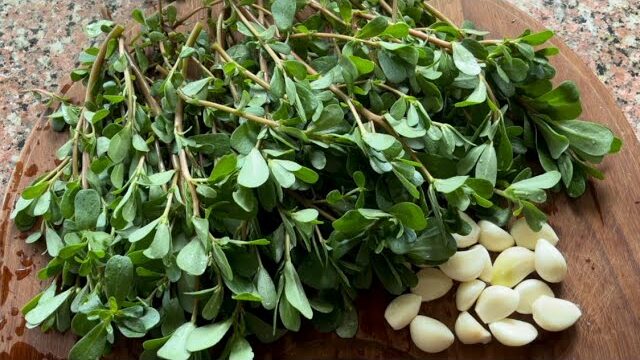
That’s great to hear! Purslane is indeed a nutritional powerhouse and a delightful surprise to find growing in your yard. This often overlooked “weed” is not only edible but also highly beneficial. Here are some insights and tips on how to make the most of your purslane:
Nutritional Benefits of Purslane
Rich in Omega-3 Fatty Acids: Purslane is one of the few leafy green vegetables that contain high levels of omega-3 fatty acids, specifically alpha-linolenic acid (ALA). This makes it exceptional for cardiovascular health and inflammation reduction.
High in Vitamins and Minerals: It’s rich in vitamin A, vitamin C, and some B-complex vitamins like riboflavin, pyridoxine, and niacin. Interestingly, purslane also contains vitamin D, which is quite rare in plants. Additionally, it offers a good dose of dietary minerals such as iron, magnesium, calcium, potassium, and manganese.
Antioxidant Properties: Purslane has significant levels of antioxidants, which help fight free radicals in the body, reducing oxidative stress and lowering the risk of chronic diseases.
How to Use Purslane
In Salads: The crunchy, lemony taste of fresh purslane leaves makes them a perfect addition to salads. You can mix them with other salad greens or eat them alone with a simple dressing.
Cooked Dishes: Purslane can be cooked as a leafy vegetable. It’s excellent sautéed with garlic and olive oil, or added to soups and stews where it acts as a thickener because of its mucilaginous quality.
Smoothies and Juices: For a nutrient boost, add purslane to your smoothies or juices. Its mild flavor blends well with other fruits and vegetables, enhancing the drink without overpowering other tastes.
Growing and Harvesting Tips
Growing Conditions: Purslane is incredibly hardy and can grow in poor soil, often appearing in cracks on sidewalks or driveways. It prefers sunny locations but can also tolerate shade.
Harvesting: You can harvest purslane by cutting the stems and leaves as needed. It’s best to pick them in the morning when their moisture content is highest. Purslane grows back quickly, so regular harvesting is beneficial.
Usage Precautions: While purslane is edible and healthy, ensure that it hasn’t been treated with pesticides or herbicides, especially if it’s growing wild. Always wash the leaves thoroughly before use.
Conclusion
Embracing purslane in your diet is a fantastic way to enhance your nutritional intake naturally. Its versatility in the kitchen allows it to be included in a variety of dishes, ensuring that you can enjoy its health benefits in many delicious ways. Plus, growing it at home can be a rewarding endeavor as it’s easy to cultivate and requires minimal care. Enjoy your purslane harvest and the plethora of benefits it brings!



